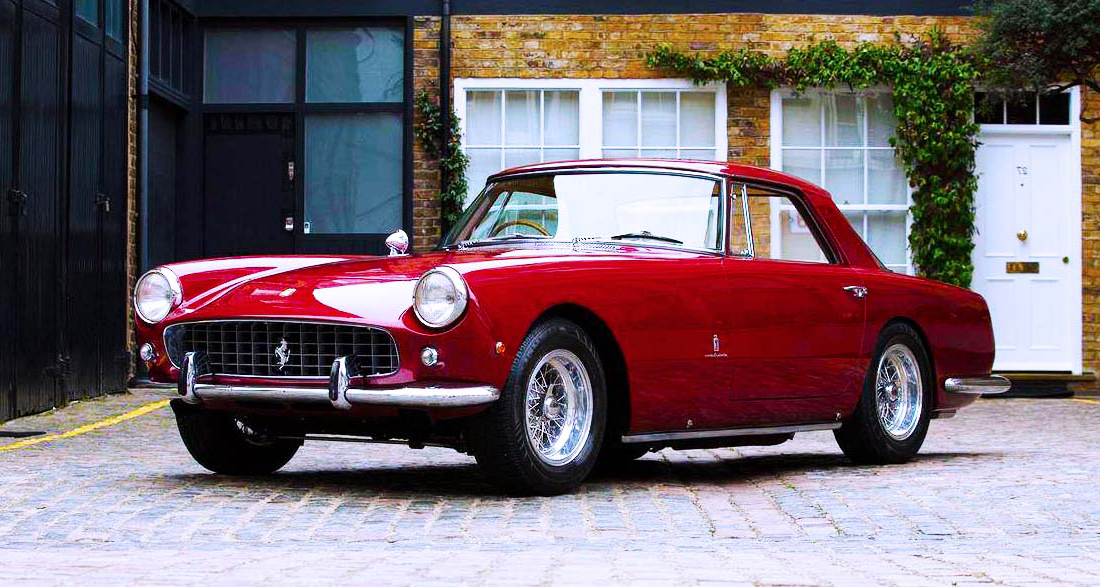Part 83: Carrozzeria Pininfarina – Sergio
By David Cavaliere
It has been a month since we last visited the cars of Pininfarina. The family name Farina is legendary in the field of both automotive design and motor racing, but where Pinin Farina began as a nickname for Battista, in 1961, the President of the Italian Republic, Giovanni Gronchi, granted permission for the family name change to Pininfarina, based on the world-wide influence that the carrozzeria had achieved. This week focuses on Battista Farina’s enormously talented son Sergio and the cars that the coachbuilders designed during the 1950s.
Sergio Pininfarina was born in Turin on September 8, 1926. He graduated in mechanical engineering from the Polytechnic of Torino in 1950, the same year that his uncle Giuseppe “Nino” Farina, won the first Formula One Championship, driving for Alfa Romeo. Sergio immediately began his career at the family firm. He became general manager of the company in 1960 and took over the reins of Chairmanship of the Company in 1966, following his father’s death. Sergio was a visionary. He was instrumental in the planning and construction of new facilities for the company (completed 1958), a research and design center (1966), a large scale wind tunnel (1972) and a new plant near Turin in 1986, the same year the company began trading on the Italian Stock Exchange (Milan). He received countless honors during his life and passed away in Turin on July 2, 2012.
It was during the decade of the 1950s that one of the most storied relationships in the automotive world began, that of Ferrari and Pininfarina and Ferrari. It began with 212 Inter, the car that replaced Ferrari’s successful 166 and 195 Inter grand tourers in 1951. Coachbuilders for the 212 Inter included the brightest stars in Italian coachbuilding – Carrozzeria Touring, Ghia, Vignale, Stabilimenti Farina and now Pinin Farina, whose styling skills resulted in a tremendous boost for Maranello.
The following year a true international effort was achieved. American manufacturer Nash (Nash-Kelvinator) commissioned Pinin Farina to revise British automaker Donald Healey’s sports car body design. Carrozzeria Pininfarina in Turin built the bodies, while the chassis was made in Warwick, England and the drive train was built in Kenosha, Wisconsin.
Success after success followed the company through the decade. In 1951, the company began producing the body for the Ghia-designed Lancia B20 GT coupé. Production would continue until 1958, with 3,871 units completed.
In 1955, with the Alfa Romeo Giulietta Spider, the industrial production of Pininfarina was stretched to the limits. Ultimately more than 27,000 bodies were manufactured. Exhibited at the Turin Motor Show, the graceful Giulietta Spider achieved world-wide success. This masterpiece was originally conceived as an export to the U.S., but became equally popular in Europe.
Another design milestone, came in 1957 with the Lancia Flamina Florida II. Its stylistic elements influenced the designs around the world for many years, especially in Detroit. It was the personal car of Pinin Farina.
As the decade neared its end, the 250 GT Coupé of Ferrari was introduced at the 1958 Paris Motor Show. It was a decisive step toward true series production for Maranello. The coupé, replaced cars bodied by Carrozzerias Boano- and Ellena with elegant coachwork by Pinin Farina, whose Grugliasco factory was now completed and ready for large-scale production. The coachbuilder eventually assembled 353 examples, making it the most collaboration up to that point between two companies destined to forge one of automotive history’s most successful partnerships. A handful of the first 250 GT Pinin Farina Coupés initiated Maranello’s experimentation with lightweight construction and the use of fiberglass. It also marked the end of what is described as Pininfarina’s ‘cubist period’. What followed in the 1960s included some of the most important designs, including one of the most beautiful cars ever produced – the Ferrari 250GT Berlinetta Lusso.
Next week the series continues with the Pininfarina’s major designs of the 1960s and 1970s. Please send comments to [email protected].





